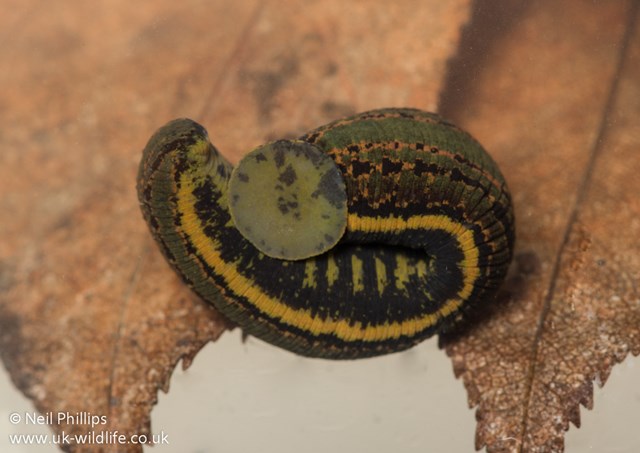ONE of the rarest invertebrates in Scotland, the medicinal leech, has been spotted in Dumfries and Galloway for the first time.
The presence of the medicinal leech has been confirmed in three ponds near Carrick Shore on the Solway coast by Buglife, as part of the Scotland-wide conservation programme, Species on the Edge.
Medicinal leeches are one of the UK’s largest native leeches, growing up to 20 cm long.

In Scotland, medicinal leeches have a dark brown or black upper side with yellow-grey stripes and a speckled underside.
They can be found in a variety of freshwater habitats, including ponds, lochs, ditches, wetlands, and streams.
The medicinal leech is now known in only three areas in Scotland – mainland Argyll, Islay, and now Dumfries and Galloway – with their population having declined primarily due to overharvesting for their use in medicine.
In the late 18th to early 19th century, these leeches were used in hospitals across Europe for bloodletting treatment.
Whilst the use of leeches for medicine is now illegal in the UK, habitat loss and freshwater pollution have badly affected medicinal leech populations in Scotland.
Buglife Conservation Director, Craig Macadam, said: “Medicinal leeches have an important place in our medical history but are now one of the rarest invertebrates in Scotland.
“The discovery of three new sites for this species in Dumfries and Galloway is incredibly important and gives us hope that further sites are discovered for this incredible species in the future.”
In an effort to save the rare leech from extinction in Scotland, Buglife is working with the Royal Zoological Society of Scotland (RZSS) to deliver Scotland’s first ever medicinal leech captive breeding programme.
14 leeches have been collected from one of their known sites and transferred to their new home, where the conservation team staff will care for them and attempt to breed as many leeches as possible to then be released back into the wild.
Fiona Strachan, Species on the Edge Programme Manager with NatureScot said: “These records from one of the Species on the Edge project areas are really exciting and, alongside the captive breeding programme, bode well for a more promising future for the medicinal leech.”
If you see a large leech in Scotland, please take a photo and send your sighting to Buglife at [email protected].
Please note they are rare and protected, so if found attached to waders or wetsuits please gently brush them off and return them to the water.

